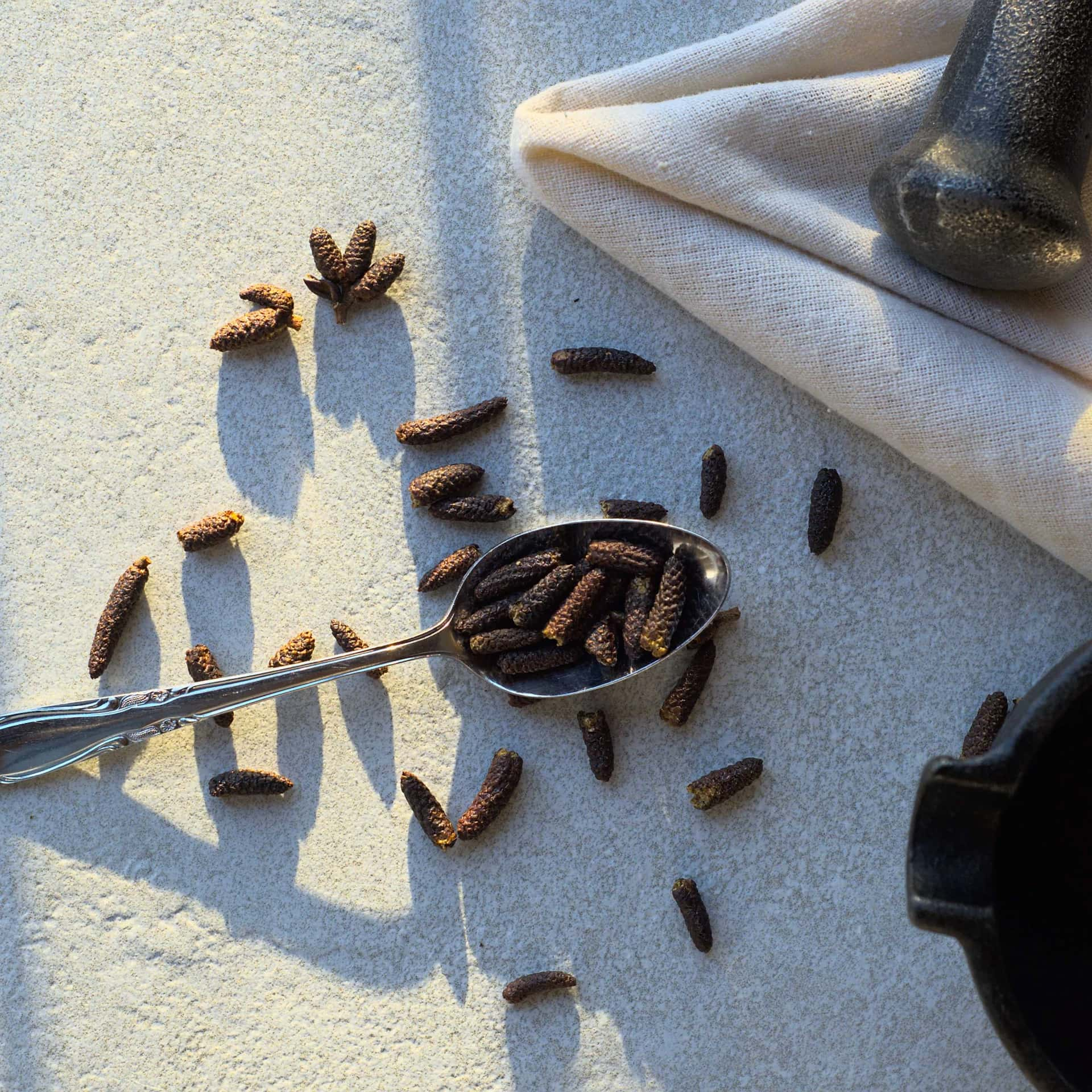“What do I do with [insert local Quebec ingredient]?”
When you're an epicurean and you like to discover new flavours, it's easy to end up with lots of new ingredients that you don't really know what to do with. Here are some tips to avoid this situation and ensure you can cook with confidence some of the best-known local Québec products:
- Flavor your pureed vegetables with dune pepper (green alder catkins)
If you are not a fan of mashed potatoes, wait before moving on to the next point! This stuff might convert you, just as it once converted our co-owner Kevin, the most fervent potato detractor we know. All you have to do is heat a little cream (heavy cream here, come on, we're not going lean) in a small saucepan, to which you will add a few
dune pepper catkins (whole or broken in two to release the resin) with other aromatics. Garlic, bay leaf and salt are recommended. When the cream is hot and tasty, filter it to remove the aromatics and add it to the drained vegetables which have previously been boiled into cubes in salt water and puree with a hand blender. Enjoy!
- Rehydrate your dried morels in a broth
Morels: not the sexiest mushroom from an aesthetic point of view, but oh so delightful for the taste buds! This trick is disarmingly simple, but has the advantage of killing two birds with one stone: when you want to use your
dried morels , rehydrate them in a (homemade) broth, which you can then use in a recipe. You will get delicious mushrooms on the one hand, and a broth flavored with morels on the other. Another way to achieve a similar result would be to rehydrate the morels in water and save it to use as a base for a broth or soup. Of course, we're talking about morels here, but this tip could apply to any dried mushroom:
matsutakes,
lobster mushrooms,
chanterelles, oyster mushrooms, etc.
3. Make a Labrador tea syrup for your cocktails
Homemade syrup is probably the easiest thing to make in the kitchen. The base requires only two ingredients: sugar and water. But the most interesting thing is to flavor it, for example by adding
Labrador tea leaves. We recommend that you brew the Labrador tea according to the usual method first, and add the sugar then, after removing the leaves. For a traditional syrup, the 1:1 ratio is suitable. If you plan to make cocktails that require a rich syrup, then you should use a 2:1 ratio (2 being the sugar). Heat the syrup until the sugar is completely dissolved, then remove from the heat and leave to cool.
- Dare to use maple syrup in Chinese cuisine
Yes, it's very "fusion" on our part, but if you've never tried it, let yourself be surprised! When a Chinese recipe calls for sugar for a sauce, replace it with maple syrup. Bonus: no need to dissolve anything since the syrup is liquid, unlike sugar. This mixture may seem surprising, but when we consider the similarity of our climates and our terroirs, it makes so much sense.
- Drink a chaga infusion before bed
When I feel like having a coffee at the end of the day or evening, I go for a chaga mushroom infusion: without caffeine, it helps you sleep well and offers an equally comforting taste (the skeptics will be confused: it doesn't taste like mushrooms in the traditional sense). Simply steep your chaga in a pot of water. The duration of the infusion depends on the shape of your chaga: in powder form it will be faster than in cubes, but chaga cubes can be reused up to 3 times. If you feel like it, we suggest adding some spices to the infusion, such as sweetfern catkins or nutmeg. Then just strain and enjoy, with some (1:1 ratio) oat milk and a dash of maple syrup!
If you want to know more about ways to cook with local Quebec ingredients, frequently consult the
Recipes and tips section to fuel your creativity and curiosity!
